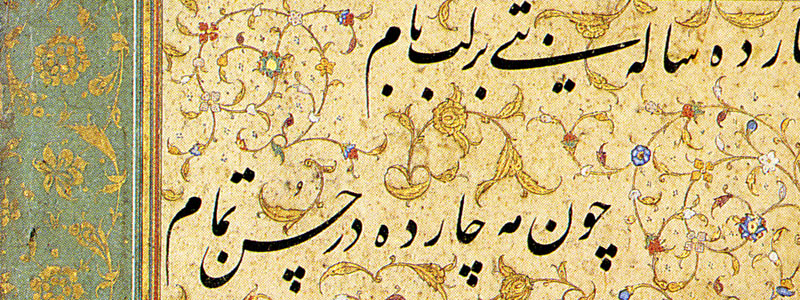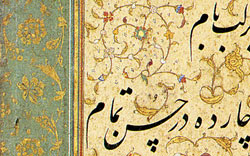‘Ali-Rezā Tabrizi has not received the recognition he deserves. He was born in Tabriz in the middle of the sixteenth century, and in his youth left his birthplace and immigrated to Qazvin. ‘Ali-Rezā studied the principles of two scripts––Thuluth and Nasta‘liq––under ‘Alā-al-Din Tabrizi and Mohammad Hosayn Tabrizi, excelling in both. Through Farhād Khān Qarāmānlu, he gained access the to court of Shāh ‘Abbās (1558 CE – 1628 CE) in 1592 CE, and from then on began using the title (nisba) "‘Abbāsi" in his signature (raqam).
‘Ali-Rezā’s work has been memorialized in many extant manuscripts in the Thuluth script, particularly in Isfahan and Mashhad. Unlike his contemporary calligraphers, he showed little interest in the Nasta‘liq script or in being employed as a scribe since he had a relatively comfortable position in the Safavid court. Even in albums (muraqqa‘), his Nasta’liq writings are rare.
He had two children, Badi‘-al-Zaman and Mohammad-Rezā, who followed in their father’s artistic footsteps. His last dated calligraphic piece is from 1031AH/1621 CE, but in all likelihood he lived until 1628 CE.




